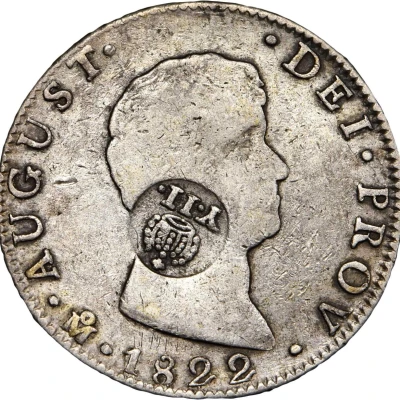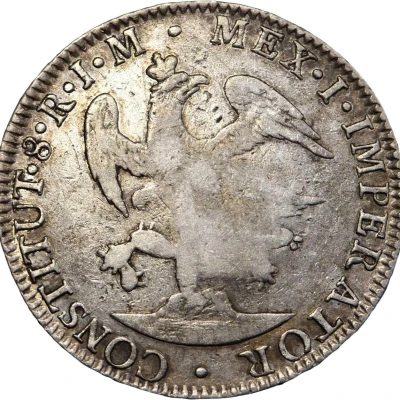


© Stacks Bowers
8 Reales - Isabella II Countermark on Mexico 8 Reales ND
| Silver (.903) | 27.07 g | 38.06 mm |
| Issuer | Philippines |
|---|---|
| Queen | Isabella II (1833-1868) |
| Type | Standard circulation coin |
| Years | 1834-1837 |
| Value | 8 Reals |
| Currency | Real (1700-1857) |
| Composition | Silver (.903) |
| Weight | 27.07 g |
| Diameter | 38.06 mm |
| Shape | Round |
| Technique | Milled, Countermarked |
| Demonetized | Yes |
| Updated | 2024-10-07 |
| Numista | N#341623 |
|---|---|
| Rarity index | 97% |
Reverse
Crowned eagle with spread wings on cactus.
Script: Latin
Lettering: MEX • I • IMPERATOR • CONSTITUT • 8 • R • J • M •
Translation: Mexico's first Constitutional Emperor.
Comment
Countermark on Mexico KM#306.Interesting fact
The 8 Reales coin with the countermark of Isabella II on a Mexico 8 Reales coin is a unique and interesting piece of history. It was issued during the reign of Isabella II of Spain, who ruled from 1833 to 1868. The coin was minted in the Philippines, which was a Spanish colony at the time, and it features the profile of the young queen on one side and the Mexican coat of arms on the other. The fact that it was countermarked with the initials "I.I." and the year of issue, 1834-1837, indicates that it was issued specifically for use in the Philippines. One interesting fact about this coin is that it was made of silver, which was a valuable and highly sought-after metal at the time. The coin's silver content is indicated by the stamp ".903" which means that it is made of 90.3% silver. This high silver content made the coin a popular choice for trade and commerce, and it was widely used in the Philippines and other Spanish colonies. It's also worth noting that the 8 Reales coin was a standard denomination in the Spanish colonial system, and it was used throughout the Spanish Empire. The fact that this particular coin was issued with a countermark specifically for use in the Philippines makes it a unique and interesting piece of history.